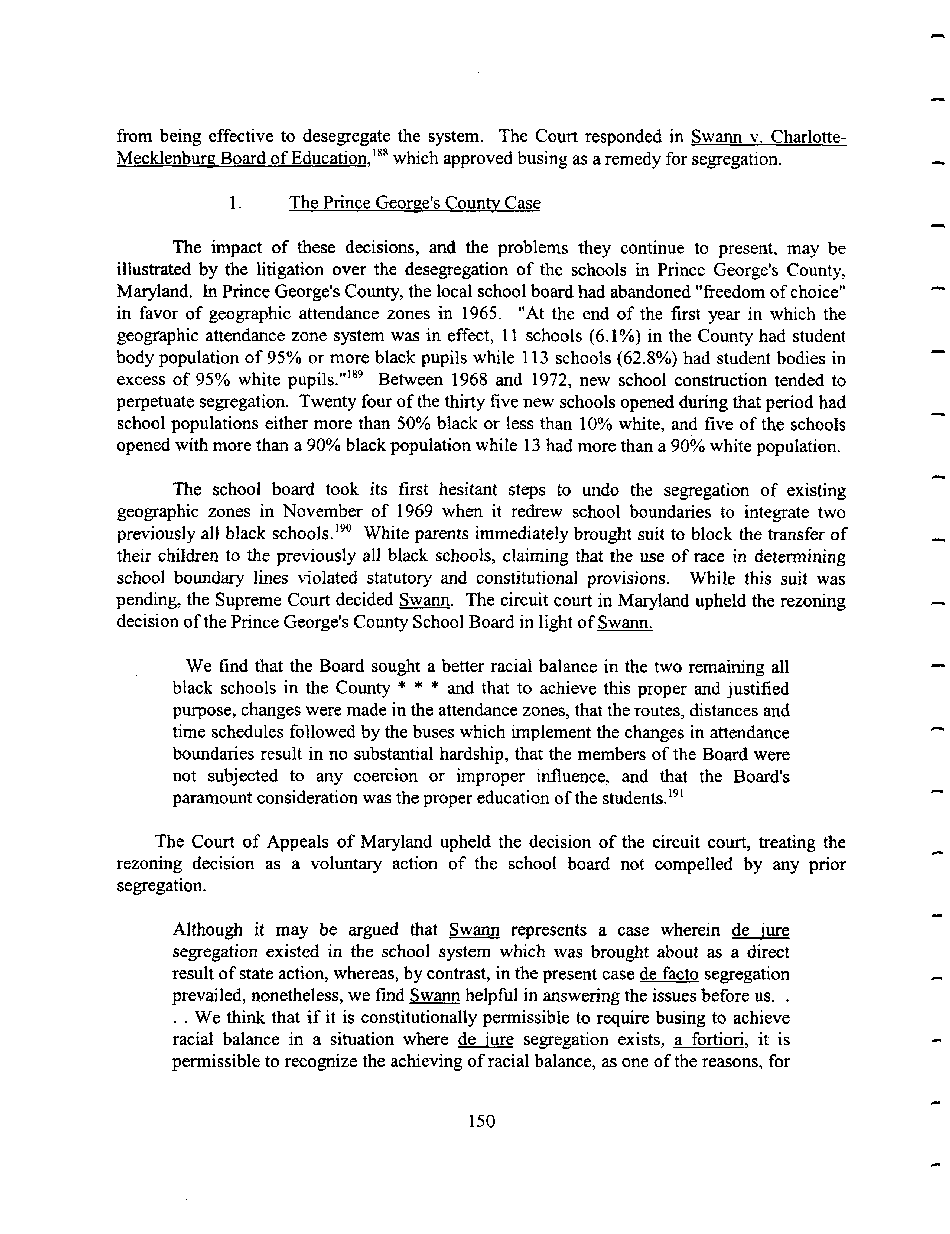|
from being effective to desegregate the system. The Court responded in Swann v. Charlotte-
Mecklenburg Board of Education.188 which approved busing as a remedy for segregation.
1. The Prince George's County Case
The impact of these decisions, and the problems they continue to present, may be
illustrated by the litigation over the desegregation of the schools in Prince George's County,
Maryland. In Prince George's County, the local school board had abandoned "freedom of choice"
in favor of geographic attendance zones in 1965. "At the end of the first year in which the
geographic attendance zone system was in effect, 11 schools (6.1%) in the County had student
body population of 95% or more black pupils while 113 schools (62.8%) had student bodies in
excess of 95% white pupils."189 Between 1968 and 1972, new school construction tended to
perpetuate segregation. Twenty four of the thirty five new schools opened during that period had
school populations either more than 50% black or less than 10% white, and five of the schools
opened with more than a 90% black population while 13 had more than a 90% white population.
The school board took its first hesitant steps to undo the segregation of existing
geographic zones in November of 1969 when it redrew school boundaries to integrate two
previously all black schools.190 White parents immediately brought suit to block the transfer of
their children to the previously all black schools, claiming that the use of race in determining
school boundary lines violated statutory and constitutional provisions. While this suit was
pending, the Supreme Court decided Swann. The circuit court in Maryland upheld the rezoning
decision of the Prince George's County School Board in light of Swann.
We find that the Board sought a better racial balance in the two remaining all
black schools in the County * * * and that to achieve this proper and justified
purpose, changes were made in the attendance zones, that the routes, distances and
time schedules followed by the buses which implement the changes in attendance
boundaries result in no substantial hardship, that the members of the Board were
not subjected to any coercion or improper influence, and that the Board's
paramount consideration was the proper education of the students.191
The Court of Appeals of Maryland upheld the decision of the circuit court, treating the
rezoning decision as a voluntary action of the school board not compelled by any prior
segregation.
Although it may be argued that Swann represents a case wherein de jure
segregation existed in the school system which was brought about as a direct
result of state action, whereas, by contrast, in the present case de facto segregation
prevailed, nonetheless, we find Swann helpful in answering the issues before us. .
. . We think that if it is constitutionally permissible to require busing to achieve
racial balance in a situation where de jure segregation exists, a fortiori, it is
permissible to recognize the achieving of racial balance, as one of the reasons, for
150
�
|

